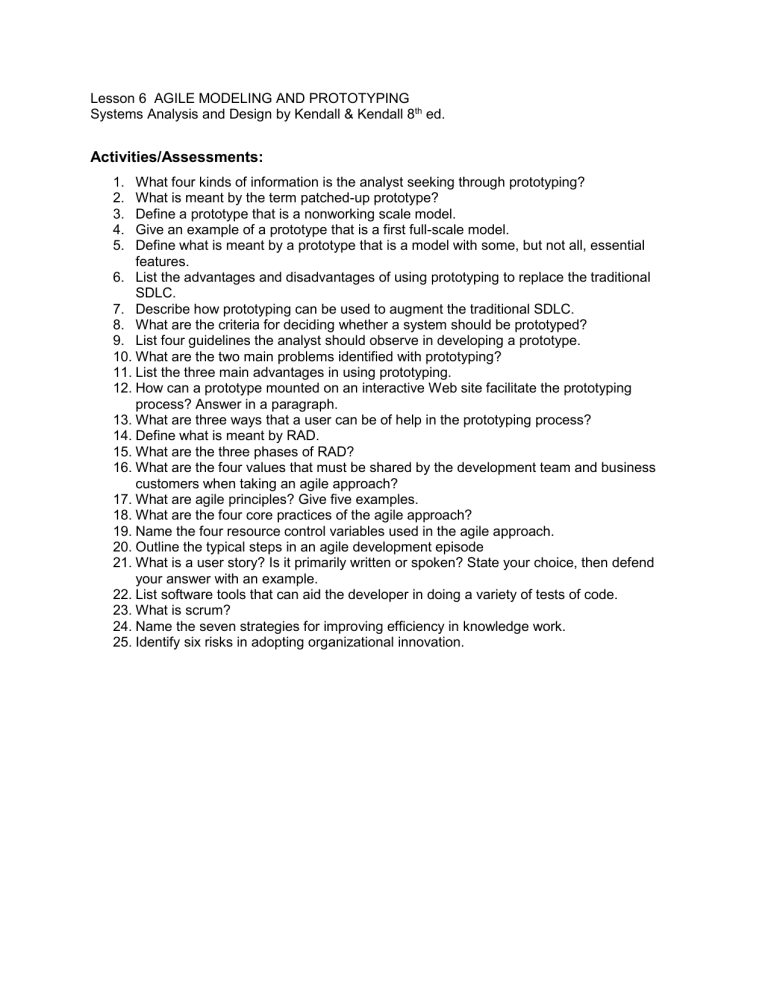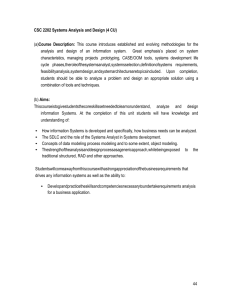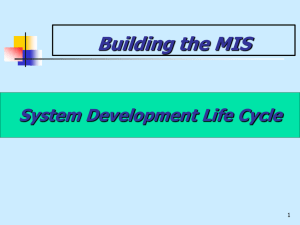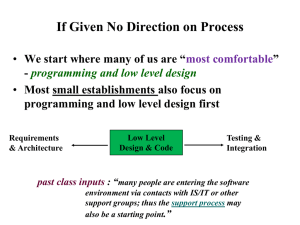
Lesson 6 AGILE MODELING AND PROTOTYPING Systems Analysis and Design by Kendall & Kendall 8th ed. Activities/Assessments: 1. 2. 3. 4. 5. What four kinds of information is the analyst seeking through prototyping? What is meant by the term patched-up prototype? Define a prototype that is a nonworking scale model. Give an example of a prototype that is a first full-scale model. Define what is meant by a prototype that is a model with some, but not all, essential features. 6. List the advantages and disadvantages of using prototyping to replace the traditional SDLC. 7. Describe how prototyping can be used to augment the traditional SDLC. 8. What are the criteria for deciding whether a system should be prototyped? 9. List four guidelines the analyst should observe in developing a prototype. 10. What are the two main problems identified with prototyping? 11. List the three main advantages in using prototyping. 12. How can a prototype mounted on an interactive Web site facilitate the prototyping process? Answer in a paragraph. 13. What are three ways that a user can be of help in the prototyping process? 14. Define what is meant by RAD. 15. What are the three phases of RAD? 16. What are the four values that must be shared by the development team and business customers when taking an agile approach? 17. What are agile principles? Give five examples. 18. What are the four core practices of the agile approach? 19. Name the four resource control variables used in the agile approach. 20. Outline the typical steps in an agile development episode 21. What is a user story? Is it primarily written or spoken? State your choice, then defend your answer with an example. 22. List software tools that can aid the developer in doing a variety of tests of code. 23. What is scrum? 24. Name the seven strategies for improving efficiency in knowledge work. 25. Identify six risks in adopting organizational innovation.


